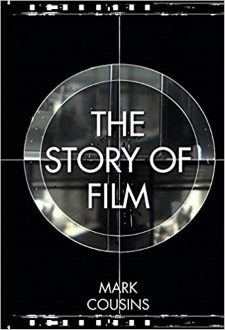 I came upon the documentary series The Story of Film: An Odyssey by Northern Irish film critic Mark Cousins. And the only way I could watch it was to sign up for some kind of Amazon Prime add-on (there seems to be an endless number of them). It bills itself as a kind of history of film. And since it has been a while since I studied the history of film in any systematic way, I thought it would be worth watching. I was wrong.
I came upon the documentary series The Story of Film: An Odyssey by Northern Irish film critic Mark Cousins. And the only way I could watch it was to sign up for some kind of Amazon Prime add-on (there seems to be an endless number of them). It bills itself as a kind of history of film. And since it has been a while since I studied the history of film in any systematic way, I thought it would be worth watching. I was wrong.
The series tries to be more inclusive of non-US filmmakers than other histories. I didn’t find that it did a very good job of this. It is still overwhelmingly focused on American filmmakers. And when it comes to world filmmaking, it still focuses on the usual suspects.
Each of the first 10 episodes covers roughly a decade of time. In general, this is a good approach. Working from the beginning of film allows you to see how it builds. But this series does little of this. When talking about techniques like cross-cutting, it spends almost no time. It is almost as if Cousins assumes that the viewer already knows this stuff.
But most of all, the whole thing comes off as the kind of history that would be watched by college-educated people who want to hold the “right” opinions.
Making DW Griffith Wispy
The whole thing reeks of the modern cinephile consensus. After providing a wholly unsatisfactory overview of early silent film, it does provide an introduction to some often neglected pioneers like Alice Guy-Blaché and Frances Marion. Then it rightly notes that DW Griffith is “over-remembered” but still important. He didn’t invent the close-up. [Sigh.] I’m not sure when people said that he did. When I took film history 30 years ago I learned that he did not invent the close-up.
But what should we remember Griffith for? According to the Story of Film, he added: “the wind in the trees” to film. I’m not even sure what this means other than that he shot outdoors a lot. Regardless, he didn’t invent this any more than he invented the close-up. Griffith is remembered for mastering the full range of film syntax at that time. But I guess it isn’t as interesting to take a nuts-and-bolts approach to his work. “The wind in the trees” sounds ever so much more appealing to upper-middle class viewers!
Bend Over Alfred, We’ve Got Some Smooching for Ya!
One of the most annoying thing in the series is its presentation of Alfred Hitchcock. People often get the impression that I don’t like Hitchcock’s work. That’s not true. I feel like I have to protect his work from intellectual pretenders who want to imbue it with pretenses that just aren’t in the work.
In this 15-minute sequence, we are told, “Hitchcock became the greatest image maker of the 20th century.” Even greater than Picasso! This is comically wrong. What does it even mean to be the “greatest image maker”? To create the most stunning images? That sure ain’t Hitchcock.
But to prove its point, the series says there are 7 reasons why this is true:
- Point of view
- Where he was born (film shouldn’t be about real life)
- His understanding of fear
- Close-ups
- Inverted establishing shots
- Under-use of music
- Odd camera angles.
All of this is pretty bland. This is clearly an argument in search of a predetermined conclusion. One could make much stronger cases for literally dozens of other 20th century filmmakers.
I could go point-by-point, but why? I do, however, want to note how idiotic the example is for the fifth reason. It is from the beginning of The 39 Steps. It starts with a close-up pan of a lighted sign that reads: “Music Hall.” And the series narrator says, “We don’t know where we are.”
[Facepalm.]
Then we see images of a man buying tickets, going to his seat, sitting down. And finally, we get the wide-shot of the inside of the music hall. Never would have guessed that! This is a perfectly acceptable way to start the movie and establish the location and the main character. But it isn’t especially innovative. And it has nothing to do with Hitchcock being “the greatest image maker of the 20th century.”
The Lack of Exploitation Film
Above all, The Story of Film focuses almost entirely on art filmmakers. Given the way the series tries to be socially conscious, I would have thought that Samuel Fuller would come up. But no. Similarly, there’s no George Romero. Or Tobe Hooper. Or John Carpenter or Wes Craven.
David Cronenberg is mentioned, but only his most obviously “art” work: Videodrome and Crash. Note that these films are really not related. Videodrome is classic body horror. Crash is a psychological drama. But I will allow that they are about the best of Cronenberg.
My point here is that The Story of Film is really just the story of a certain kind of film. And that film is the kind of appeals to boring college-educated types who get their opinions from articles in The New Yorker. The rest of us are better off putting on The Amazing Colossal Man and making that whole thing go away.
